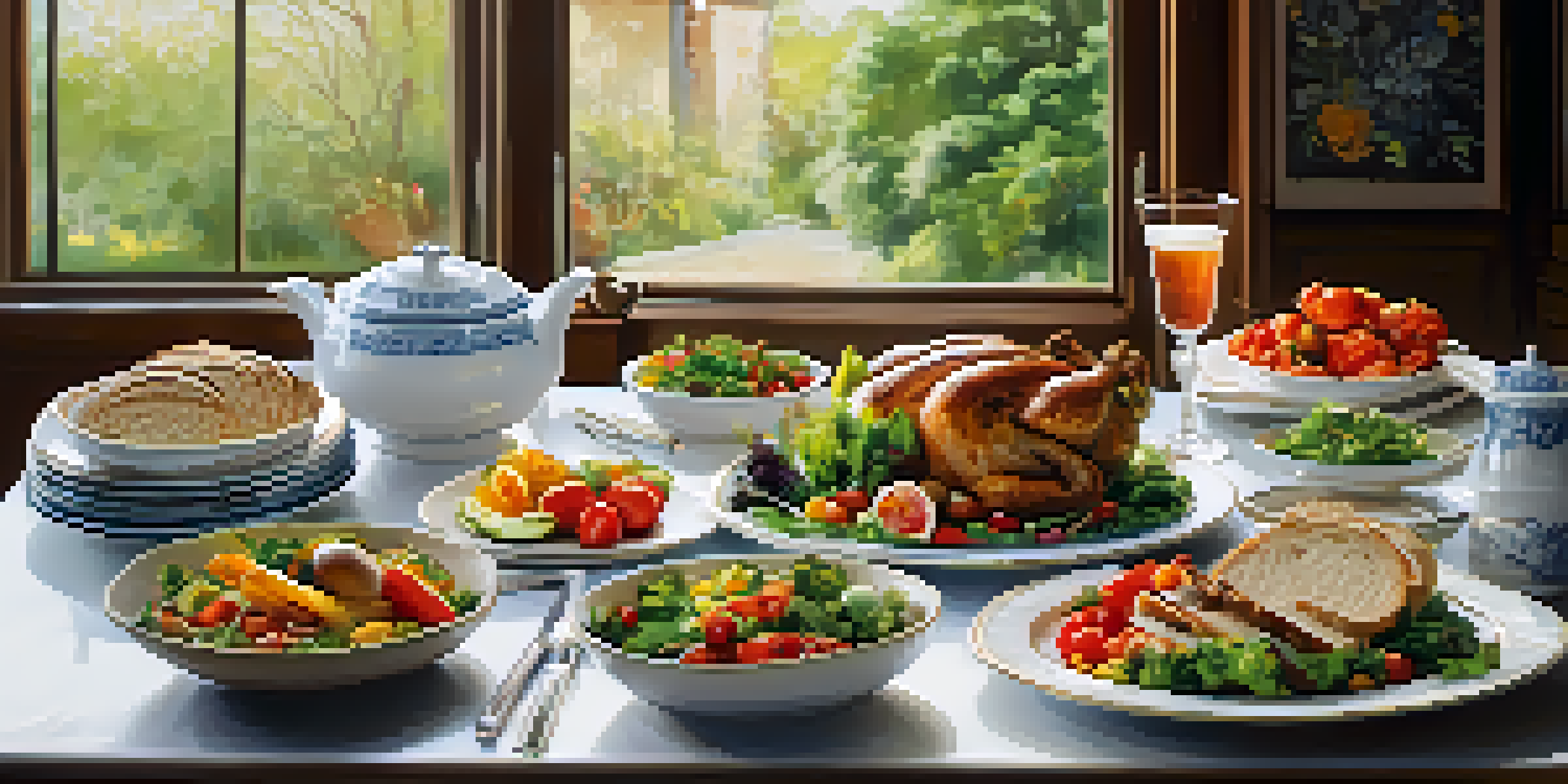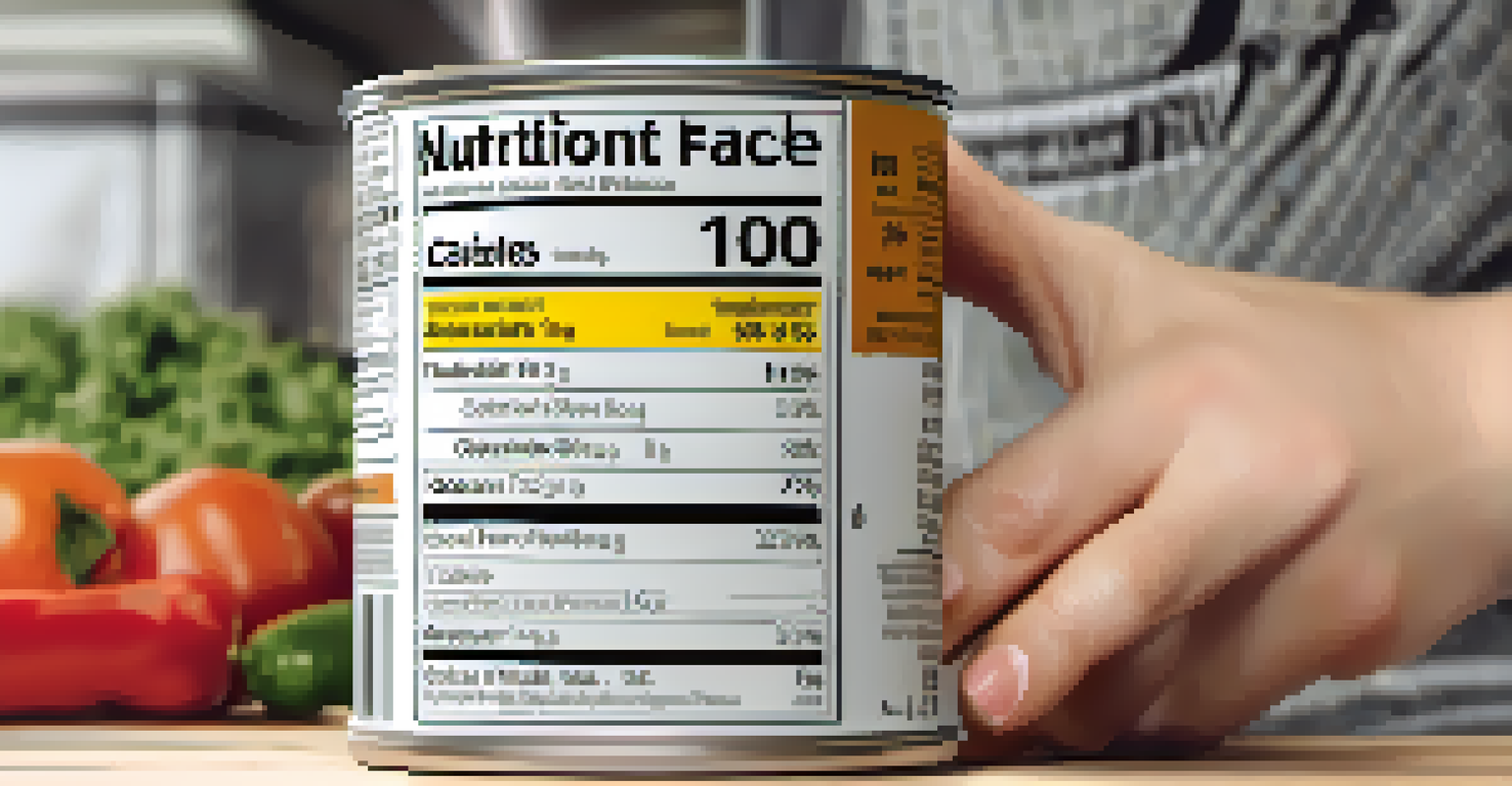Understanding Nutrition Labels: A Workshop for Chefs

Why Nutrition Labels Matter for Chefs
Nutrition labels are essential tools for chefs looking to create healthier dishes. They provide important information about the ingredients and nutritional value of the products we use. Understanding these labels can help chefs make informed decisions that cater to dietary needs and preferences.
Let food be thy medicine and medicine be thy food.
As chefs, we often aim to impress our guests with delicious meals, but we also have a responsibility to their health. By grasping the significance of nutrition labels, we can strike a balance between taste and nutrition. This knowledge empowers us to create dishes that not only tantalize the taste buds but also support well-being.
In today’s health-conscious environment, customers are increasingly interested in what they eat. By understanding nutrition labels, chefs can confidently address these inquiries and offer healthier options. It’s not just about cooking; it’s about cultivating a culture of health in our culinary practices.
Deciphering the Nutrition Facts Panel
The Nutrition Facts panel is often the first thing we look at on a packaging label. It provides a wealth of information, including serving sizes, calorie counts, and nutrient breakdowns. Familiarizing ourselves with this panel is crucial for cooking with intention and purpose.

For instance, the serving size can significantly affect how we interpret the rest of the information. A snack might seem low in calories, but if the serving size is just a few chips, the reality could be quite different. Chefs must be vigilant in understanding these details to create truly balanced meals.
Nutrition Labels Aid Healthier Cooking
Understanding nutrition labels empowers chefs to create dishes that balance taste and health.
Additionally, knowing how to read the percentages of daily values can guide us in making healthier choices. It helps us recognize how a product fits into our overall dietary goals. This understanding can be a game-changer when planning menus that cater to various health needs.
Recognizing Key Nutrients on Labels
When examining nutrition labels, certain nutrients deserve our attention. For example, we should look for fiber, protein, and healthy fats, as these contribute to a well-rounded diet. On the flip side, keeping an eye on sugars, sodium, and unhealthy fats can help us avoid pitfalls.
You are what you eat, so don’t be fast, cheap, easy, or fake.
Consider fiber, which is crucial for digestion and can help keep customers feeling full. A dish that's high in fiber can enhance overall satisfaction, making it a win-win for both chefs and diners. Chefs can creatively incorporate fiber-rich ingredients like beans, whole grains, and vegetables into their recipes.
Similarly, understanding the role of added sugars can steer us away from overly sweet dishes. By choosing products with lower sugar content or utilizing natural sweeteners, we can create desserts that are both indulgent and mindful of health. This awareness allows us to innovate while staying true to our culinary values.
The Importance of Ingredient Lists
Ingredient lists are another vital component of nutrition labels that chefs must analyze. They provide insight into what goes into our food, allowing us to make better choices about the products we use. Understanding these ingredients can also help us cater to dietary restrictions and preferences.
For example, if a dish is meant to be gluten-free, checking the ingredient list is essential to ensure no hidden gluten sources are present. This diligence helps us avoid potential allergens and ensures our meals are safe for all guests. It also shows customers that we care about their health and dietary needs.
Key Nutrients to Watch For
Focusing on nutrients like fiber and protein while limiting sugars and unhealthy fats enhances meal satisfaction.
Moreover, by choosing products with fewer artificial ingredients and preservatives, we can create cleaner, more wholesome dishes. This commitment to quality can enhance the overall dining experience. As chefs, we can advocate for better food options by being selective about the ingredients we incorporate into our menus.
Serving Sizes: More Than Just a Number
Serving sizes can often be misleading, making it crucial for chefs to understand their implications. They can dictate how we interpret the nutritional information on a label. By recognizing the difference between recommended serving sizes and typical portions, chefs can make better-informed decisions.
For instance, a label might suggest a small serving of pasta, but many people eat much more than that in one sitting. This discrepancy can lead to unintended overconsumption of calories and other nutrients. By understanding serving sizes, chefs can adjust their recipes to promote healthier eating habits.
Moreover, educating customers about proper portion sizes can contribute to a more mindful dining experience. By presenting appropriately sized dishes, we can help guests enjoy their meals without feeling overstuffed. It’s all about fostering a healthy relationship with food through thoughtful serving practices.
Using Labels to Create Healthier Menus
One of the most rewarding aspects of understanding nutrition labels is the ability to craft healthier menus. With knowledge in hand, chefs can select ingredients that align with their culinary vision while promoting health. This approach not only enhances the dining experience but can also attract a broader clientele.
For example, incorporating whole grains instead of refined grains can elevate a dish's nutritional profile. Similarly, opting for lean proteins and fresh produce can create vibrant, healthful meals that resonate with today’s diners. By prioritizing these choices, we can lead the way in culinary innovation.
Engaging Customers on Nutrition
Communicating openly about nutrition fosters a community around healthy eating and builds customer loyalty.
Furthermore, creating menu items that highlight their nutritional benefits can set our offerings apart. Whether it’s a low-calorie appetizer or a heart-healthy entrée, customers appreciate transparency in their dining choices. By showcasing our commitment to health, we can build trust and loyalty among our clientele.
Engaging with Customers About Nutrition
As chefs, we have a unique opportunity to engage with customers about nutrition. This dialogue can enhance the dining experience and foster a sense of community around healthy eating. By being open and informative, we can empower patrons to make informed dining choices.
For instance, consider hosting a workshop or cooking demonstration that highlights how to read and interpret nutrition labels. This proactive approach not only educates customers but also showcases our expertise as chefs. It’s a great way to build relationships and create a loyal customer base.

Additionally, sharing insights on social media or through newsletters can keep our audience informed and engaged. By discussing the importance of nutrition labels and how they influence our cooking, we can inspire others to prioritize health in their own kitchens. This shared knowledge can elevate our culinary community.